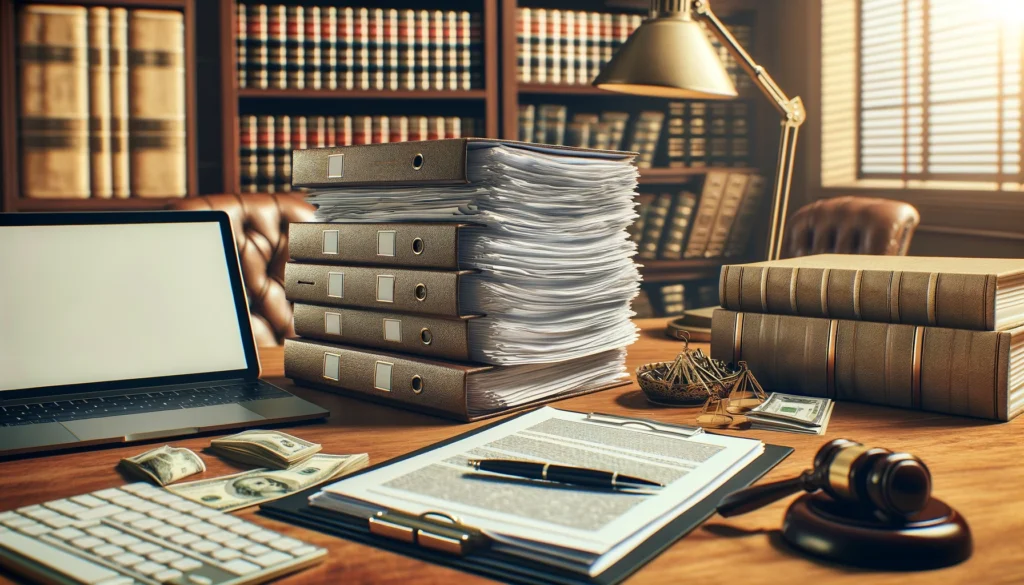
The AI Revolution Comes to the Courtroom
Artificial intelligence (AI) is rapidly reshaping industries worldwide, and the legal field is no exception. Large language models (LLMs) like ChatGPT, capable of generating remarkably human-like text, have immense potential to streamline processes and free up time for paralegals and lawyers alike. In the realm of personal injury motions, these tools offer exciting possibilities for drafting, research, and case analysis.
However, it’s crucial to approach this AI revolution with a balanced perspective. Understanding the capabilities and limitations of these models is essential, as is exercising ethical judgment throughout their use. With careful implementation and oversight by legal professionals, AI-powered tools can be transformative.
But what is ChatGPT, exactly? And how can paralegals begin to harness its power specifically for brief writing? Let’s dive into the basics…
Your Mechanical Drafter: ChatGPT Basics for Brief Writing
Think of ChatGPT as a remarkably flexible writing assistant. It’s a large language model (LLM) trained on a vast dataset of text and code. This allows it to accomplish the following tasks relevant to legal writing:
- Summarize complex legal concepts: Need a refresher on a specific tort or a breakdown of procedural rules? ChatGPT can provide concise explanations.
- Generate text: Provide a short case summary, and it can draft initial motion sections or offer alternative phrasing possibilities.
- Research assistance: It can point towards relevant case law or statutes, although critical fact-checking remains essential.
Understanding Limitations
ChatGPT is powerful, but it’s not a legal scholar. It can make factual errors, misunderstand nuanced legal arguments, and lack awareness of very recent case law developments. Always approach its output with a critical eye. Think of it as a tool that accelerates your drafting process, not a replacement for your legal expertise.
The true power of ChatGPT lies in how you ask it for help. Mastering the art of prompting is the key to getting the most out of this AI assistant in your brief writing. Let’s explore how…
Also read:
Prompt Mastery: The Key to Unlocking ChatGPT’s Legal Mind
The quality of the prompts you give ChatGPT will directly influence the quality of the output you get. Think of these prompts as detailed instructions combined with precise questions.
Specificity is Your Friend
Avoid broad requests like “Write a motion to compel.” Instead, break down the task and provide context:
- Prompt example 1: Case Summary as Input “Summarize the key facts and legal issues for a negligence claim in the following case: [Insert brief case description]. Now, draft two paragraphs for a motion to compel discovery, focusing on the defendant’s lack of response to interrogatories.”
- Prompt Example 2: Finding Relevant Precedent “Identify cases within our jurisdiction over the past 5 years that address the admissibility of expert witness testimony in slip and fall personal injury cases. Focus on cases where the expert’s qualifications were challenged.”
Techniques for Effective Prompting
- Chain prompts: Start with a broad request, then refine with follow-up prompts based on the output.
- Provide examples: Give ChatGPT a well-structured motion section as a model.
- Include constraints: Specify the voice (“formal legal tone”) and the desired length of the output.
Beyond Basic Drafting
ChatGPT can be used creatively:
- Brainstorming arguments: Ask for counterarguments to your own motion to anticipate the opposition’s strategy.
- Simplifying language: Prompt it to rewrite a complex passage in plain English to test for clarity.
ChatGPT can generate impressive initial drafts, but remember, its output is just a starting point. Let’s discuss how to refine and transform AI-generated text into polished legal writing.
Also read:
Section 4: Beyond the Draft: Refining AI Output
It’s tempting to view ChatGPT as a magical solution that spits out perfect legal briefs. However, the reality is that its output, while often impressive, requires careful review and revision. Think of yourself as the editor-in-chief of your AI assistant’s work.
Essential Editing Tasks
- Fact-checking: Meticulously verify all case citations, statutes, and legal terminology. LLMs are prone to misinterpretations or may rely on outdated information.
- Clarity and Conciseness: Legal writing demands precision. Edit ChatGPT’s output for wordiness, awkward phrasing, and clarity of argument.
- Case Specificity: Ensure the AI-generated text aligns with the exact facts of your case. Avoid generic language. Adapt language to fit the judge’s preferences if known.
- Consistency & Voice: Maintain a consistent style and legal tone throughout the motion.
The Dangers of Overreliance
ChatGPT cannot replace the critical thinking and nuanced judgment of a trained paralegal or attorney. Treating it as a shortcut carries ethical risks, and could even harm your client’s case if significant errors go unnoticed.
Harnessing the Power, Responsibly
The key is to utilize ChatGPT strategically, saving time on routine tasks and brainstorming while maintaining full control and responsibility for the final product.
As AI technology continues to evolve, how might it further reshape the paralegal’s role in the future? Let’s wrap up with some thoughts on the exciting potential…
Also read:
The Future is Collaborative
We’re still in the early stages of AI integration within law. The way LLMs like ChatGPT are used will undoubtedly continue to evolve. They may take on more sophisticated legal research, complex case analysis, and even predictive tasks like assessing the potential outcome of motions.
This evolution holds the promise of freeing paralegals from repetitive tasks, allowing them to focus on higher-level strategy and client interaction. Those who embrace AI tools and develop the skills to utilize them effectively will be well-positioned for success in the legal landscape of tomorrow.
The AI revolution isn’t something to passively observe; paralegals have the opportunity to shape it, providing feedback to developers and actively contributing to the ethical and effective integration of these transformative tools.


